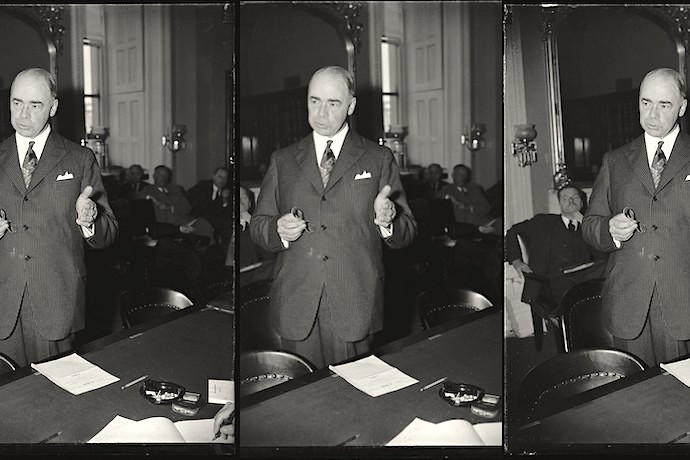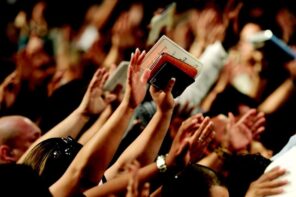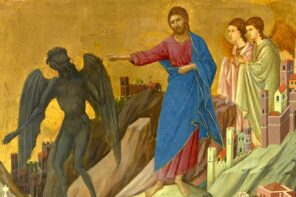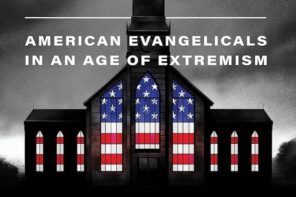In a bombshell story last month, the New York Times revealed that two years ago an obscure billionaire named Barre Seid gifted $1.6 billion to a conservative political power broker, while skirting as much as $400 million in taxes. The transaction was difficult to uncover, benefiting from both an inside source and a chase through tax documents. Few had heard of Seid prior to the Times story. But it’s now clear that he’s made a massive monetary footprint in right-wing politics.
The hidden history of the funding of the American Right doesn’t start with Barre Seid. It goes back for over a century and is deeply tied to conservative Christian institution building. “Following the money” means examining the past. Conservative Christian ideas and political constituencies are activated in (and amplified by) durable institutions, linked together by their founders’ and funders’ mutual interests with assistance from a network of allied media organizations. In other words, bankrolled by some deeply committed (and deep-pocketed) individuals, the Christian Right has invested in achieving its long-term goals. And attending to how conservative Christians in the US have worked over time to build the institutions of this network is essential for understanding the rise of the New Right in a period in which they have lost both the demographic and cultural battles over American public life.
The Times story offers little information on Seid, the owner of Tripp Lite, a company that produces surge protectors. At age 90, he’s kept an intentionally low profile, even as he’s been widely known in Republican circles as a major donor to conservative causes. According to a recent ProPublica report, Seid donated a minimum of $775 million between 1996 and 2018. Among the organizations that have benefitted from his largesse are the Heartland Institute, a nonprofit dedicated to climate change denial, and the conservative George Mason University law school. Evidence suggests he was also a major donor to the Clarion Fund, which distributed millions of anti-Muslim DVDs in the run up to the 2008 elections.
Seid’s most recent gift of $1.6 billion was made to the Marble Freedom Trust, an equally obscure conservative nonprofit group run by Leonard Leo, considered by many to be one of the most powerful right-wing political figures in the US. A former executive vice president at the Federalist Society and a highly successful fundraiser, Leo is widely credited with the success Republicans and the Right have had in their quest to reshape the judicial branch. Supreme Court Justice Clarence Thomas went so far as to joke in 2018 that Mr. Leo was the number three most powerful person in the world. Thomas belly-laughed as Leo quipped in reply, “God help us! God help us.”
Right-wing forms of Christianity have reshaped the political landscape of the US in recent decades, culminating with the current 6-3 conservative Supreme Court majority. But despite the fact that they’ve achieved so much as their numbers have dwindled, and often in deeply unorthodox ways, most commentators fail to mention, perhaps even to see, what enabled them do it. Our new book on evangelicalism in the US emphasizes that institution-building over more than a century has created a vast and evolving network of institutions that spreads ideas, mobilizes energy, and amplifies political and theological messaging.
Beginning in the late 19th century, wealthy and influential conservative Christians began building institutions that were designed to link together the fragmented landscape of conservative Christianity into a force in American public life. In Chicago, the Moody Bible Institute fused branding techniques drawn from corporate boardrooms to transform itself into a nodal point in the spread of conservative theology.
On the West Coast, oil barons like Lyman Stewart and the Pew family poured money into building seminaries, national magazines and mailing lists, and missionary organizations. Stewart funneled profits from his Union Oil company to found the Bible Institute of Los Angeles, known now as Biola University. He also bankrolled the publication of The Fundamentals, a multi-volume collection of essays written by conservative theologians, and its distribution through one of the first truly national mail campaigns.
Stewart used his money to amplify what was, at the time, a fringe form of Christian theology called dispensationalism or premillennialism. Stewart’s philanthropy helped to wed evangelicalism to dispensationalism to such a degree that we’ve become accustomed to seeing its “end-times” apocalypticism as part and parcel of evangelical Christian belief.
A generation later, J. Howard Pew bankrolled the formation of non-profit organizations that would connect conservative pastors with libertarian-minded corporate leaders, first in opposition to the New Deal and later in opposition to Communism. Though Pew funneled huge amounts of money into fusing evangelical theology with libertarian economics, his efforts bore little fruit at first. In the early 20th century, conservative Christians struggled to square Jesus’s teachings with libertarian economic ideas. But eventually Pew’s investments paid off to the extent that, like the new belief in the coming end of the world, white evangelicals have embraced libertarian economics as gospel truth.
The network continued to expand throughout the 20th century, particularly as enterprising evangelical leaders invested in radio and television networks. Founders of these radio and television empires often parlayed the income they received into building yet more evangelical institutions. Charles Fuller’s West Coast radio empire eventually allowed him to fund the formation of Fuller Theological Seminary, while Jerry Falwell’s success in radio and television resulted in the creation of Liberty University.
In recent years, wealthy white evangelicals have funded the formation of even more institutions that resonate with this network. Among the more famous are James Dobson’s Focus on the Family, the Council for National Policy, and the Museum of the Bible (funded by the owners of Hobby Lobby).
While it’s just the tip of the iceberg, this story shows that it’s not enough to say that evangelical voters go to the polls to vote against abortion rights or for conservative causes simply because they support “family values” or because they’re “values voters.” Nor is it responsible to point solely to Leonard Leo’s Federalist Society list of reliably conservative judges as an explanation for why the Supreme Court has taken a conservative turn. For those of us trying to understand how a minority religious coalition has set itself up to take an outsized role in US public life, we need to pay attention to the network of moneyed institutions that work together to amplify right wing ideas, mobilize voters, and shape public discourse.





